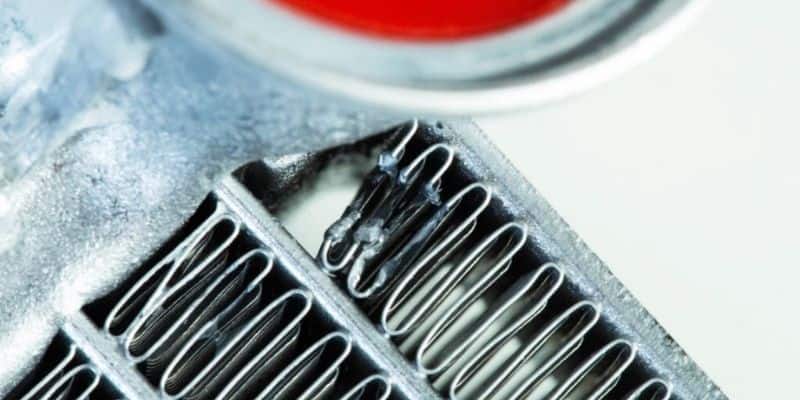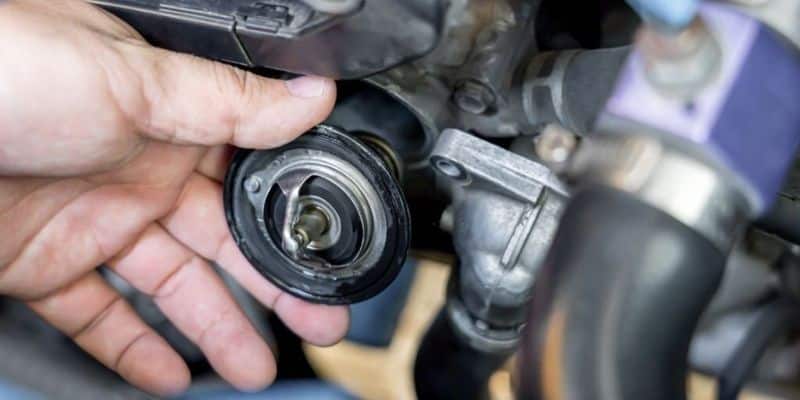A functioning car heater is important for keeping passengers comfortable, especially during cold weather. However, one of the most frustrating issues vehicle owners sometimes face is when the car heater starts blowing cold air instead of warm air.
In this article, we will look at the common causes behind a car heater that is not working properly and blowing cold air. We will also provide steps to diagnose and resolve the problem with either do-it-yourself solutions or professional repair.
As the weather gets colder, it is normal to expect your car’s heater to provide a blast of warm air when turned on. However, if hot air fails to come from the vents and cold air blows out instead, it significantly impacts the driving experience. Dealing with a malfunctioning car heater that blows cold air should therefore not be delayed.
This article explains why the car heater not working blowing cold air all the fixes that you can DIY and when to call a professional.
Why is my car heater not blowing hot air?
Some of the most common complaints vehicle owners have about their car heaters include the sudden onset of cold air blowing from the vents instead of warm air. When this happens, it usually indicates an issue has developed within the heater system. By learning about the various causes that can result in a “cold air” problem, vehicle owners will be better equipped to troubleshoot and get their heaters back in working order.
Causes of a Car Heater Not Working Blowing Cold Air
A. Low coolant level
One of the primary reasons for a car heater not working, blowing cold air is low coolant level. Coolant plays a crucial role in the heating system, as it draws heat from the engine and transfers it throughout the cooling system. When low on coolant, there is insufficient heating of the coolant, which in turn cannot warm the heater core sufficiently to generate hot air for the interior.
Some drivers may fail to notice that the coolant level has decreased over time. It’s important to check the overflow reservoir every few months and top up coolant as needed.
Checking the coolant level is one of the simplest ways to diagnose heater issues. Remove the coolant reservoir cap and fill the coolant to the ‘Full’ mark. Top it off with a premixed colored coolant/water solution if low. Maintaining adequate coolant prevents air pockets from forming and ensures optimal heat transfer.
B. Thermostat issues
The thermostat essentially controls the flow of coolant and regulates the engine’s temperature. When it malfunctions, it prevents warm coolant from circulating properly through the heater core, resulting in cold air production. Signs of a faulty thermostat include slow warming of the engine, overheating issues, rough idle, or car jerking while driving at high speeds.

To test the thermostat, mechanics first check that it is opening and closing as intended by feeling the radiator hose temperatures.
A thermostat that is stuck open will not allow the engine to reach optimal operating temperature, while one stuck shut prevents warm coolant from flowing through the heater core. Replacing a faulty thermostat is usually a cheap and easy fix.
C. Heater core problems
The heater core is essentially a series of tubes hidden behind the dashboard that uses heat from the engine coolant circulating through it to warm up incoming cabin air blown through it by the blower motor fan.
Over time, mineral deposits or corrosion can develop inside these thin-walled tubes, restricting air and coolant flow. This clogged heater core can be identified by the inefficient transfer of heat to the passenger compartment.
Mechanics can inspect the heater core visually for leaks and clogs by removing it from its housing under the dash. To pinpoint the exact area of a blockage, they may blow compressed air through the heater core while it is submerged in water, watching for air bubbles in the coolant.
Replacing a fouled or damaged core restores full heating capacity. Flushing the entire cooling system regularly helps prevent core issues.
D. Water valve malfunction
Water valve malfunction is one of the causes of a car heater blowing cold air. The heater control valve, often mistakenly called the “water” valve, is located near the heater core and regulates whether coolant circulates through it or gets diverted back to the radiator.
The water valve is responsible for controlling the flow of coolant from the engine to the heater core. When the valve malfunctions, it may get stuck in the closed position, preventing the hot coolant from entering the heater core and heating the air that is blown into the car.
As a result, the air blown out by the heater remains cold. Another possible issue with the water valve is a leak or crack that allows coolant to escape, leading to a loss of hot coolant and a decrease in heating performance.
Additionally, a faulty thermostat can cause the water valve to malfunction. If the thermostat fails to open at the correct temperature, it will prevent the flow of hot coolant to the heater core, causing cold air to be blown out. To fix this issue, it is important to have the water valve inspected and repaired or replaced if necessary.
E. Blower motor failure
Blower motor failure is also a major reason for car heater malfunctioning. The blower motor is responsible for circulating the hot air from the engine into the car’s cabin. If the motor becomes faulty or stops working altogether, it can result in the heater blowing cold air instead.
This can be due to several reasons, such as a malfunctioning motor, a blown fuse, or a broken wiring connection. In some cases, the blower motor may still be functioning, but at a reduced speed, resulting in inadequate heat circulation. To resolve this issue, it is recommended to have the blower motor inspected and repaired or replaced if necessary.
The blower motor uses electricity to spin the fan and push air through the heater core ducts into the vehicle. A broken or malfunctioning blower motor prevents air from moving through the heater core, meaning passengers receive cold air regardless of how hot the coolant gets.
Testing fan speed levels and checking for unusual noises are ways to isolate a bad blower motor. Replacing it restores air distribution. Keeping leaves and debris out of the motor protects it from premature wear.
Steps to Diagnose Car Heater Not Working
Not all issues require immediate mechanical expertise if homeowners have basic technical skills. Here is a step-by-step process most can use to efficiently troubleshoot their car heater blowing cold air:
1. Checking the coolant level
To diagnose a car heater malfunction, start by checking the coolant level in the radiator. Insufficient coolant can prevent the heater from generating enough warmth. Open the hood of the car and locate the radiator cap. Carefully remove the cap and inspect the coolant level. If it is low, add the appropriate amount of coolant to bring it to the recommended level.
Remember to only add coolant when the engine is cool to avoid any potential injuries. After topping up the coolant, test the heater to see if it is now functioning properly. Add pre-mixed coolant if low.
2. Testing the thermostat
Testing the thermostat is one crucial step to inspect if the car heater is not working and blowing cold air into your car. Start by parking the car in a safe and well-ventilated area. Switch on the engine, turn the heater on, and wait for it to warm up. Once the temperature gauge shows the optimal level, observe if hot air is coming out of the vents. If not, the thermostat could be faulty.

You can test it by feeling the upper and lower radiator hoses. If one is significantly hotter than the other, it indicates a malfunctioning thermostat that needs to be replaced.
Test the thermostat by feeling radiator hoses and having someone monitor engine temp gauge behavior during warmup.
3. Inspecting the heater core
Inspecting the heater core can be done by visually examining the core for any signs of leakage or damage. Additionally, checking the coolant level and ensuring that it is at the correct level is important. If there are no visible issues, a mechanic may need to further test the core for proper functioning using specific diagnostic tools.
With the engine warm, remove the plastic covers under the dashboard to inspect the heater core for leaks or clogs. Use compressed air through the core ports while submerged to check for blockages.
4. Examining the water valve
To diagnose a malfunctioning car heater, one of the steps involves examining the water valve. Start by locating the valve, usually located near the firewall on the passenger side of the engine compartment. With the engine off, check for any leaks or signs of damage on the valve. Inspect the valve for proper functioning by gently moving the lever back and forth. If the lever does not move smoothly or if there are any blockages in the valve, it may need to be replaced.
Additionally, ensure that the valve is receiving proper power by checking the electrical connections. If any issues are found during this examination, they should be addressed accordingly to restore the functionality of the car heater.
5. Assessing the blower motor
Check the blower motor by running it on each speed setting. Listen for unusual noises indicating failure. Inspect wires/connectors also. Replace worn motors showing high hours of use.
Following these basic steps identifies the root cause in many cases. Professional diagnosis may be required for complex issues like electrical component testing. However, addressing simple mechanical problems independently saves repair costs.
DIY Solutions for a Car Heater Blowing Cold Air
Tackling minor heater issues without paying a mechanic provides savings and empowers drivers. Here are some recommended do-it-yourself repairs:
A. Flush the entire heater core and cooling system to remove mineral deposits blocking airflow. Use a garden hose and antifreeze mixture run through bleed valves
B. Replace a suspected faulty thermostat. Most vehicles use a sealed type for easy installation.
C. Clean or replace the heater control valve using solvents or compressed air if it feels sticky or reluctant to fully open/close.
D. Swap out a defective blower motor. After-market universal replacement units are installed without difficulty.
With basic hand tools and some auto knowledge, homeowners equip themselves to fix common heater problems. Major work like heater core replacement requires professional machining skills and gauges to refill the cooling system properly.
When to Seek Professional Help for Car Heater Problems?
While DIY repairs save money on minor issues, more complex car heater jobs warrant taking it to a repair shop:
A. If flushing the heater core or the entire cooling system fails to clear a plug, the old core likely needs replacement due to corrosion inside. Machining skills are required.
B. Electrical diagnosis of the wiring harness or computer component faults associated with heater controls go beyond home mechanics’ abilities. Scanning tools narrow suspected culprits.
C. Coolant leaks discovered during troubleshooting necessitate pressure testing skills and burping equipment to refill the system bubble-free.
Mechanics properly diagnose root causes, perform repairs comprehensively, and retest functions. Their credentials, liability insurance, and warranty coverage provide peace of mind over difficult jobs.
Preventive Maintenance Keeps Heat Working
Simple seasonal maintenance prevents most heater breakdowns:
A. Every 2 years, flush the cooling system including the heater core to eliminate mineral deposits inside tubes.
B. Check the coolant strength and top-off reservoirs twice annually as part of vehicle inspections.
C. Replace the thermostat every 5 years or as indicated to ensure it retains calibrated temperature response.
D. Keep interior heater louvers and ducts debris-free so air flows unrestricted to vents.
E. Lubricate and inspect blower motors annually for smooth operation and replace them when showing high hours.
FAQs
Why is my car heater not getting hot?
If your car heater is not getting hot, it could be due to a few reasons. One common issue is a low coolant level, which prevents the heater core from receiving enough hot coolant to produce heat. Another possible cause could be a malfunctioning thermostat, preventing the engine from reaching the optimal temperature. Additionally, a faulty heater control valve or a clogged heater core could also be responsible for the lack of heat.
How do I know if my heater core is clogged?
A clogged heater core can be examined by inspecting the heater core and looking for any damage or leakage near the core. It can be done by passing the compressed air through the heater core ports and if find any blockage, remove it immediately.
Conclusion
From low coolant that restricts heat transfer to blocked heater cores and faulty valves, this article covered the most common reasons why car heaters blow cold air unexpectedly. By learning basic diagnostic and repair methods, drivers gain self-sufficiency in handling routine problems instead of relying solely on repair shops.
With preventive seasonal maintenance of cooling system components, the heater continues providing vital warmth and comfort through frigid winter driving.

Joseph Morgan has decades of automotive experience. The Detroit native started restoring classics in the 1970s. He owned a vintage repair shop and authored articles for car magazines. With a 1965 Mustang fastback of his own, Joseph now shares advice through his YouTube channel. From engine swaps to rust repair, his expertise helps preserve automotive history.
